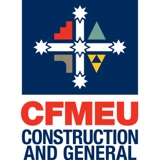Title Page
-
Inspection Report to
-
Cooling Tower Site Reference:
-
Date of Inspection
-
Inspected By
-
Phone: (Inspector)
-
Email: (Inspector)
-
Customer Contact:
-
Customer Contact Email:
-
Visit Type
-
Inspection Type
-
Cooling Tower Disinfection By:
-
Add a Photo of The Cooling Tower
Cooling Tower Information
-
Tower group
-
Tower Type
-
Tower Material
- Galvanised Steel
- Stainless Steel
- Stainless Steel and Galvanised Steel
- FRP
- FRP & Galvanised Steel
- FRP & Stainless Steel
- FRP & Wood
- Concrete
-
Tower Manufacturer
-
Model Number
-
Serial Number
-
Order Number
-
Year of Manufacture
-
Process Served by Tower
-
HW Temperature °C
-
CW Temperature °C
-
WB Temperature °C
-
Cell Inspected
-
Speed Reducer Type
-
Tower Type
-
Tower Material
-
Tower Manufacturer
- Marley Davenport
- Ceramic Cooling Towers
- B.A.C
- SPX
- Balcke Duerr
- Hamon
- Other
-
Model Number
-
Serial Number
-
Order Number
-
Year of Manufacture
-
Process Served by Tower
-
HW Temperature °C
-
CW Temperature °C
-
WB Temperature °C
-
Cell Inspected
-
Cell Inspected
-
Name Plate Photo
Introduction
External Structure
-
The most commonly used materials for the structure of factory assembled towers are stainless steel, galvanized steel, FRP, and a combination of those materials with various grades of steel being utilized for the majority of any brackets or fixings to satisfy a specific preference or design. It is critical that these components are well maintained.
-
What is the condition of the External Structure
Cladding / Outer Casing
-
A cooling towers casing acts to contain water within the tower, provide an air plenum for the fan, and transmit wind loads to the tower framework. It must have diaphragm strength, be watertight and corrosion resistant, and have fire retardant qualities. It must also resist weathering, and should present a pleasing appearance.
-
What is the condition of the Cladding and Outer Casing.
External Access / Platforms
-
Cooling towers typically require some form of permanently fixed access to aid regular site inspections and maintenance.
-
What is the condition of the External Access and Platforms.
Fan Deck
-
The fan deck is considered a part of the tower structure, acting as a diaphragm for transmitting dead and live loads to the tower framing. It also pro¬vides a platform for the support of the fan stacks, as well as an access way to the mechanical equip¬ment and water distribution systems.
-
What is the condition of The Fan Deck.
Fan Stack / Fan Guard
-
Considerable thought, calculation, modeling, and testing goes into the design and construction of a fan stack because it so directly affects the prop¬er flow of air through the tower. Fan efficiencies can be severely reduced by a poorly designed fan stack, or significantly enhanced by a well-designed one.
-
What is the condition of The Fan Stack / Fan Guard.
Distribution System
-
The distribution system in a crossflow tower is located at the top of the cooling tower with inlet pipework connected to a flow control valve i.e. a butterfly valve or horizontal control (HC) valve, however in a counterflow tower the distribution will be internal, and the inlet pipework is generally connected to a header box with distribution arms branching off.
-
What is the condition of the Distribution System.
Distribution Nozzles
-
Nozzles are designed to distribute the water evenly over the fill media. Coming in various shapes and sizes, the installed nozzles are governed by the duty requirements identified during the original design specification of the cooling tower.
-
What is the condition of The Distribution Nozzles.
Air Inlet System
-
The purpose of an air inlet system is to retain circulating water within the confines of the tower, as well as to equalize air flow into the fill, the air inlet system can either be integral with the fill pack or supported alone in a separate support system.
-
What is the condition of the Air Inlet System.
Internal Access Platforms
-
Internal access platforms allow the maintenance team to gain safe entry into the cooling tower.
-
What is the condition of the Internal Access and Platforms.
Internal Structure
-
As with the external structure - the most commonly used materials for the structure of factory assembled towers are stainless steel, galvanized steel, FRP, and a combination of those materials with various grades of steel being utilized for the majority of any brackets or fixings to satisfy a specific preference or design.
-
What is the condition of the Internal Structure.
Drift Eliminator System
-
Drift eliminators remove entrained water from the discharge air by causing it to make sudden changes in direction. The resulting centrifugal force separates the drops of water from the air, deposit¬ing them on the eliminator surface, from which they flow back into the tower. As with the air inlet system the drift eliminators can be integral with the fill pack or supported by a separate support system.
-
What is the condition of the Drift Eliminator System.
Fill Pack
-
One of the fundamentally important components of a cooling tower is the fill pack assembly. Its ability to promote both the maximum contact surface and the maximum con¬tact time between air and water determines the efficiency of the tower, and it must promote this air-water contact while imposing the least possible restriction to air flow.
-
What is the condition of the Fill Pack.
Fan Assembly
-
Designed for efficient and low-sound operation, Marley fans increase cooling tower performance with superior air flow and pressure capability at reduced speed.
-
What is the condition of the Fan assembly.
Geareducer / Belt Drive / Direct Drive
-
Various technologies are available to transmit power in a cooling tower, including gear drives, belt drives and direct drives.
-
What is the condition of the Geareducer / Belt Drive / Direct Drive.
Motor
-
Cooling tower duty motors in Marley products are built according to NEMA standards and designed to withstand exposure to hot, moist cooling tower conditions. The TEFC (totally-enclosed, fan-cooled) motor is protected from water and debris, reducing maintenance requirements.
-
What is the condition of the Motor.
Tyre Coupling / Driveshaft
-
Couplings and driveshafts must be strong and durable to efficiently transmit power from the motor to the gearbox. Marley mechanical components are specifically designed for cooling tower duty.
-
What is the condition of the Tyre Coupling / Driveshaft.
Cold Water Basin
-
The cooling tower basin serves two fundamental functions, 1) collecting the chilled water following its heat transfer process, and 2) acting as the tower’s primary foundation. It also functions as a collection point for silt/debris left over from the water evaporation process, it must be accessible, cleanable, have adequate draining facilities, and be equipped with suitable screening to prevent entry of debris into downstream services/processes.
-
What is the condition of the Cold Water Basin.
Plume Abatement Coil
-
The plume abatement coil is used in the colder months to reduce the plume from the cooling towers. Coils must be inspected regularly for damage and cleaned to remove any debris build up and assure they are operating as required.
-
What is the condition of the Plume Abatement Coil.
Sound Attenuation Panels
-
Sound absorber panels are strategically placed around the cooling tower to reduce any noise pollution created from the tower whilst in operation.
-
What is the condition of the Sound Attenuation Panels.






















